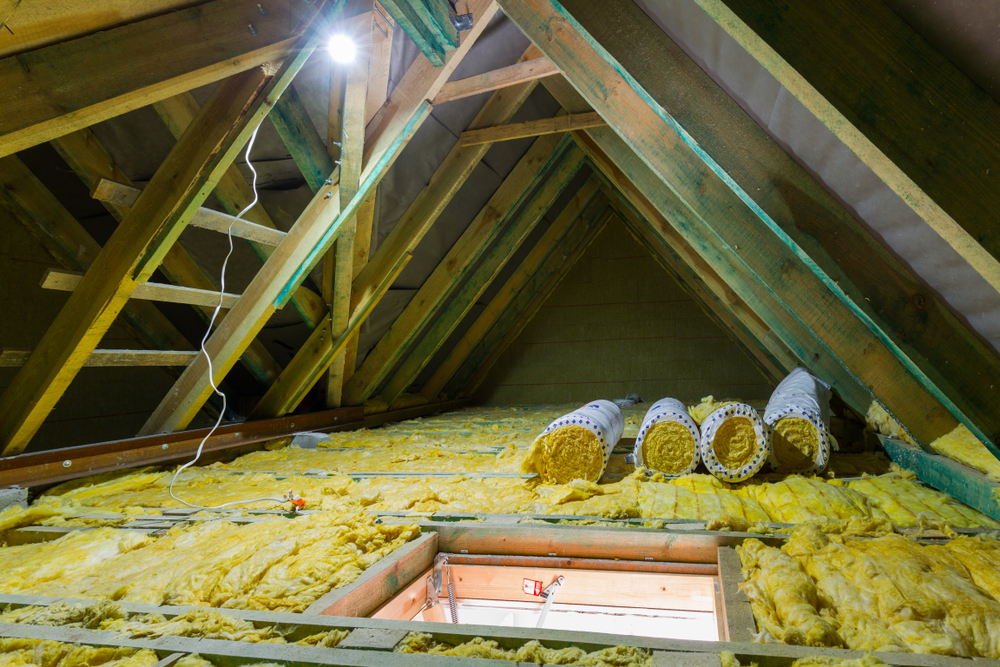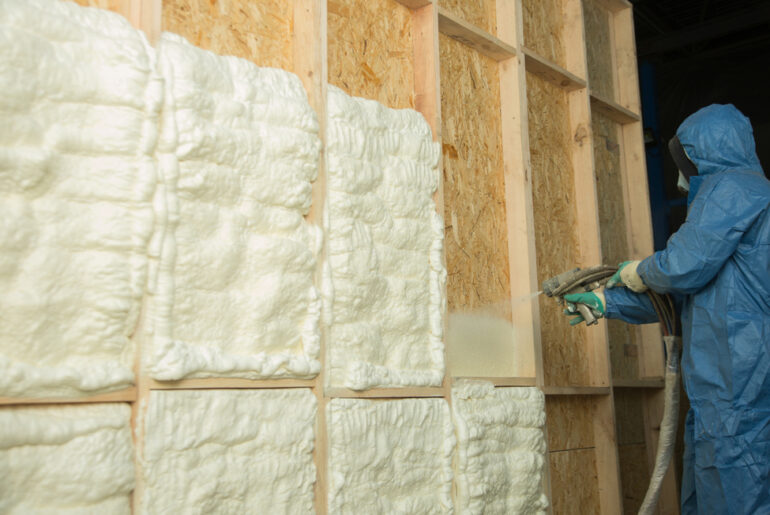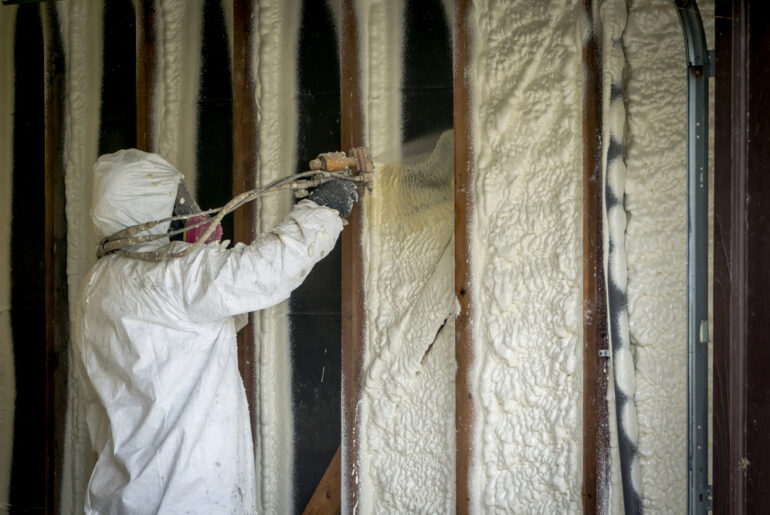As cold weather approaches, it’s a great time to do an attic inspection. If your home is more than 10-15 years old, you may notice you can see the ceiling joists where you couldn’t before.
Most attics are insulated with blown fiberglass or cellulose insulation, which can settle over time. Compacted insulation is less effective than loose insulation, so many times the solution is to add more insulation on top of the existing loose fill or batts to restore the R-value.
Here we will describe the process most professionals use to add new insulation to an attic that already has some, but not enough insulation.
What Types of Insulation Can I Add to Existing Insulation?
Fortunately, you can mix and match essentially any standard insulation materials as needed. All homes have both large and small spaces that need insulation, so using the appropriate material for the job is most important.
For example, if you plan to add blown insulation to your attic, it’s a great idea to first seal any gaps or spaces that can leak air from the outside. You can see them much easier when the insulation isn’t in the way. Most pros use caulk or expanding spray foam first, and then blow in the insulation.
Choose The Right Insulation For Your Attic Design
Depending on the design of your attic framing, fiberglass batts or blown insulation may be your best option. Here are a few common attic designs and which type of insulation may be most effective:
Small Attic with No Flooring
Smaller, one-level ranch-style homes often have roofs with a pitch of 4:12 or less. In these homes, the attic space is often no more than 36” high. Because of the limited access, blown fiberglass or cellulose is the best attic insulation in these instances.
Cost: [Fiberglass Loose Fill]: $.50 – $1.10 sq/ft
Cost: [Cellulose]: $1.20 sq/ft
Also, look for insulation baffles stapled to the lowest end of the rafters. These baffles must be present if you plan to install blown insulation more than 4” deep. Deeper insulation will get sucked into the soffit vents, causing a blockage.
Because the lack of headroom prevents access, fiberglass batts are not the best choice. But, if limited access prevents the installation of baffles, installing fiberglass batts as far as you can reach is better than nothing. Just remember not to block the soffit vents.
If the attic was originally insulated with fiberglass batts or rockwool, install the new batts 90 degrees to the old batts. Make sure your new batts do not block the soffit vents.
Medium Attic With No Flooring
In a medium-sized attic, you’ll have more access to the nooks and crannies that can leak. First, you’ll want to seal the leaks, and then install the appropriate insulation.
Sealing
If your attic height is greater than 36” tall, but less than 72”, lay down walk boards across the rafters. Next, use expanding spray foam or high-quality caulk to seal any air leaks, especially any you can see light through.
Baffles
Next, identify if vent baffles are present. If no baffles are installed, you can either install them (because you have more room to work) or use fiberglass unfaced batts.
To install baffles, all you need is a pair of scissors or a knife and a stapler. Starting at the bottom, bend the baffle to form an angle to match the roof pitch and staple it in place. Extend the baffle up the rafter as far as it will go and staple it to both rafters.
Unfaced batts
Unfaced fiberglass batts negate the need for the baffles because you can carefully place them away from the soffit vents. If your existing insulation is uneven, use a leaf rake to smooth it out. Lastly, fluff the batts and lay them on the insulation perpendicular to the ceiling joists.
Caution: Do not use faced batts to add insulation over existing insulation. Faced batts have a paper backing that functions as a vapor barrier. The vapor barrier will trap moisture between the layers of insulation and can lead to mold growth.
Cost: [Unfaced Fiberglass Batts]: $.30 – $1.50 sq/ft
Blown Fiberglass and Cellulose
If insulation baffles are installed, you can also use blown fiberglass or cellulose. Both offer similar R-value per inch and are installed in a similar manner. Just measure the depth of the existing insulation and determine the R-value.
For example, if you measure 5” of blown fiberglass, you have an R-value of about 15. Most building codes require at least R 38, so you’ll need to add about 8”-10” of additional blown insulation.
Large Attic with No Flooring
A large attic more than 72” high will usually have at least a small section of flooring, as well as baffles installed because of the extra storage space it provides. However, if yours does not, you can follow the same procedure as earlier and install either baffles or fiberglass batts.
Large Attic with Some Flooring and Storage
Storage Platform
Larger attics often contain some flooring and perhaps a storage platform. For example, a common HVAC arrangement locates a large return duct down the center of the attic.
Many builders will encase this duct with OSB or plywood as a selling feature as it creates a storage platform. If the home has a steep roof pitch, this also creates extra space in the attic.
Additional Fiberglass Batts
If your large attic has a floor that prevents you from adding more insulation directly to the existing insulation, you can use fiberglass batts. Just lay the unfaced batts on top of the flooring, but don’t staple them to the floor.
In this method, you can still use the floor when needed, like when returning Christmas decorations. Because the batts are unsecured, you can just move them out of the way when you need to access another part of the attic.
Please note that you should always wear eye, skin, and lung protection when moving insulation in an attic, so keep the safety gear handy.
Expanding Spray Foam
There are two primary types of expanding spray foam insulation. Open-cell spray foam is usually the kind you purchase in a can. Open-cell spray foam is great for sealing small gaps and cracks, but it is not appropriate to apply it on top of existing insulation.
Closed cell spray foam is a professionally installed version of spray foam that is appropriate for attics. However, it also cannot be applied over existing insulation, so it should only be installed after the existing insulation has been removed.




